
In the impoverished Gaza Strip, where most people struggle to make ends meet amid a crippling blockade, the suffering of stray dogs and cats often goes unnoticed.
Said el-Er, who founded the territory’s only animal rescue organisation in 2006, has been trying to change that. He and other volunteers rescue dogs and cats that have been struck by cars or abused and nurse them back to health – but there are too many.
So in recent weeks they have launched Gaza’s first spay-and-neuter programme. It goes against taboos in the conservative Palestinian territory, where feral dogs and cats are widely seen as pests and many view spaying and neutering as forbidden by Islam.
“Because the society is Muslim, they talk about halal (allowed) and haram (forbidden),” Mr El-Er said. “We know what halal is and what haram is, and it’s haram (for the animals) to be widespread in the streets where they can be run over, shot or poisoned.”
Islam teaches kindness towards animals, but Muslim scholars are divided on whether spaying and neutering causes harm. Across the Arab world, dogs are widely shunned as unclean and potentially dangerous, and cats do not fare much better.
Mr El-Er and other advocates for the humane treatment of animals face an added challenge in Gaza, which has been under an Israeli and Egyptian blockade since the Islamic militant group Hamas seized power in 2007. Gaza’s two million residents suffer from nearly 50 per cent unemployment, frequent power outages and heavy travel restrictions.
With many struggling to meet basic needs, animal care is seen as a waste of precious resources or a luxury at best. Mr El-Er’s group, Sulala for Animal Care, relies on private donations, which can be hard to come by.
Mr El-Er says his team can no longer keep up with the number of injured animals that they find or that are brought to the clinic. “The large number of daily injuries is beyond our capacity,” he said. “That’s why we resorted to neutering.”
On a recent day, volunteers neutered a street dog and two cats that had been brought in. There are few veterinary clinics and no animal hospitals in Gaza, so they performed the operations in a section of a pet store that had been cleaned and disinfected.
“We have shortages in capabilities, tools, especially those needed for orthopaedic surgeries,” said Bashar Shehada, a local veterinarian. “There is no suitable place for operations.”
Mr El-Er has spent years trying to organise a spay and neutering campaign but met with resistance from local authorities and vets, who said it was forbidden. He eventually secured a fatwa, or religious ruling, stating that it is more humane to spay and neuter animals than to consign an ever-growing population to misery and abuse.
Once the fatwa was issued, Mr El-Er said local authorities did not object to the campaign as a way of promoting public health and safety. The Hamas-run health and agriculture ministries allowed veterinarians to carry out operations and purchase supplies and medicine, he said.
The Gaza City municipality provided land for a shelter earlier this year. Before that, Mr El-Er kept the rescued animals at his home and on two small tracts of land that he leased.
The new shelter currently houses around 200 dogs, many of them blind, bearing scars from abuse or missing limbs from being hit by cars. At least one was adjusting to walking with a prosthetic limb. A separate section holds cats in similar shape.
The group tries to find homes for the animals, but here too it faces both economic and cultural challenges. Very few Gazans would keep a dog as a pet, and there’s little demand for cats. Some people adopt the animals from abroad, sending money for their food and care.
Over the past decade, international animal welfare groups have carried out numerous missions to evacuate anguished animals from makeshift zoos in Gaza and relocate them to sanctuaries in the West Bank, Jordan and Africa.
But there are no similar campaigns for dogs and cats, and Gaza has been sealed off from all but returning residents since March to prevent a coronavirus outbreak.
Mr El-Er’s phone rang recently and the caller said a dog had been hit by a car. Volunteers from Sulala brought it back to the shelter on the back of a three-wheeled motorbike and began treating it. Mr El-Er says they receive around five such calls every day.
Desperate Puppy Trapped in Slaughterhouse, Pleading for Help with Heartbreaking Eyes

Meet Toby! This story began with a heartbreaking photograph that broke our hearts. Toby was bound and wrapped in a bag, his eyes filled with terror and misery. His life was hanging by a thread, with the fear of execution just minutes away. We realised we needed to move quickly.
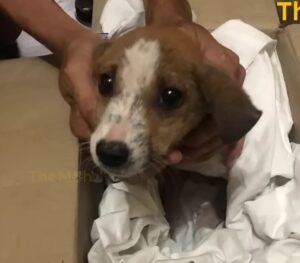
We rushed Toby to the vet since his condition was critical. Toby’s ordeal had rendered him paralysed, a defence mechanism, a desperate attempt to protect himself from the horrors of the world. He had clearly lost trust in humanity, and his initial check found no broken bones. The idea of crushed nerves was investigated, but one thing was certain: Toby had suffered greatly.
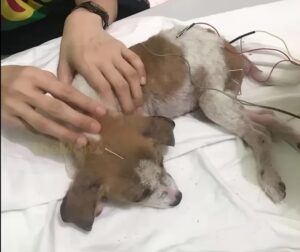
Toby was extremely resilient despite his pain and terror. He never complained, silently suffering the trials that life had placed upon him. Toby, like any other dog, deserved a chance at a normal existence, in our opinion.
The road to recovery began with acupuncture, and Toby surprised us by being unusually calm and cooperative. The tiny angel gradually began to trust us, and his true beautiful nature began to come through.
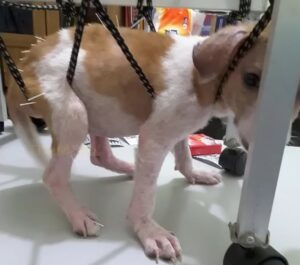
Today, Toby exudes happiness. While his walk remains difficult, his eyes tell a different story – one of joy, resilience, and unexpected optimism. His left leg has steadily grown stronger, allowing him to lift his body and take the first steps towards a brighter future.
Many people have been following Toby’s growth, and one generous woman gave him a wheelchair. It was an exciting time for Toby as he relished his newfound freedom. He now runs everywhere, a testament to his tenacity.
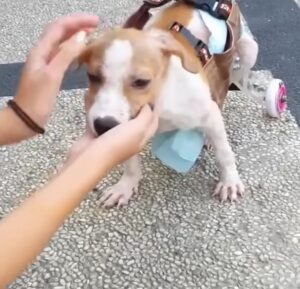
But Toby’s adventure does not end there. He continues to undergo acupuncture treatments and benefits from swimming therapy. Every day, he lives a life full of happiness, love, and caring.
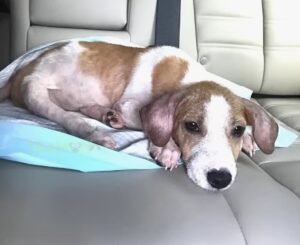
It’s hard to believe that just four months ago, Toby’s life was in jeopardy. He might not have lived to see this day if fate had been one minute later. Toby’s story is a testament to the power of kindness, resilience, and second chances. He is a living reminder that every being is deserving of love, care, and the chance to live a life of happiness and purpose. Toby, you genuinely deserve all of the world’s love.
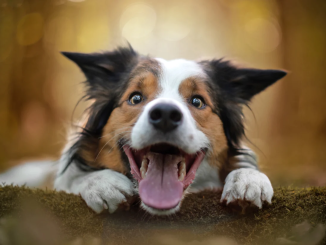
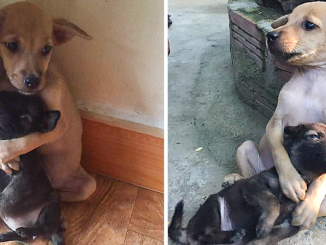
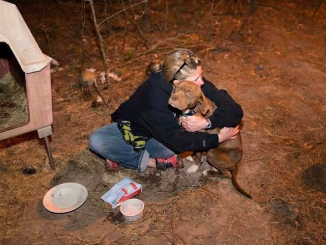
Leave a Reply